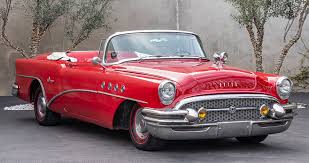From Bathtubs to Breakthroughs: The Legacy of David Dunbar Buick
The next time you relax in your bathtub, consider the history behind that everyday fixture. If you’re reading this in a vintage, enamelled iron bathtub—likely a product of your appreciation for classic home decor—you have David Dunbar Buick to thank for keeping it rust-free over the years. Buick was the genius behind the technique that allowed enamel to adhere to iron, preserving bathtubs from corrosion.
Buick initially amassed wealth through his plumbing business, thanks to his innovation in enamelling. However, his business acumen was largely attributed to his partner's financial expertise, as Buick himself was more of an inventor than a businessman. This distinction would become increasingly evident throughout his career.
Starting with humble beginnings, Buick’s pioneering spirit was nurtured by his parents, who emigrated from Abroath, Scotland, to America when he was just two years old. After his plumbing business faced difficulties, Buick and a friend took over the company. Yet, Buick’s passion for invention, particularly in internal combustion engines during the 1890s, led to tensions with his business partner, resulting in the sale of the plumbing business.
With substantial time and resources at his disposal, Buick embarked on new ventures. He invested in the Buick Auto-Vim and Power Company and later the Buick Manufacturing Company, both aimed at producing and selling engines for agricultural use and automobiles. However, his fixation on developing a complete car diverted his attention from these ventures.
In 1903, Buick finally introduced his automobile, featuring a revolutionary design with a twin-cylinder engine mounted under the floor, a two-speed planetary transmission, and a single chain driving the rear axle. The engine’s overhead-valve design was groundbreaking, and although Buick is often credited with pioneering the functional OHV engine, the early days of motoring are shrouded in uncertainty.
What is certain is that Buick’s innovative design caught the attention of William C. Durant, who acquired the burgeoning company in 1904, just before the formation of General Motors. Buick retained stock and continued to receive a salary from GM until 1921. Despite his continued involvement in various unsuccessful business ventures—such as Californian oil, ambitious car brands, and carburettor supply—Buick’s later years were spent teaching at a technical school. He passed away in 1929, leaving behind a complex legacy marked by both triumphs and setbacks.
It seems cruel, but here we must leave him and concentrate on the marque that Billy Durant made from Buick's beginnings. The first four-cylinder model arrived in 1906, but it was the
Model 10 that really made the early reputation of the company. It wasn't that unusual, advanced or particularly pretty, but it won races - including the first ever held at the Indianapolis Speedway
- it worked well and was backed up by some pretty florid advertising: 'The most popular car in the world for women!' and yet also: 'The car for men with real red blood who don't like to eat dust.' Okay...
The next big step was the first six-cylinder Buick, introduced for 1914, and taking over the range increasingly from 1918. This was an early sign of Durant's clever brand positioning; customers needed to know which niche each marque fitted into, and in the early days, cylinder count was crucial. So, Chevrolet (after being stung by the poor sales of a 1917 V8 model) dropped back to four cylinders through the Twenties, while Oakland lost its way somewhat after the new budget sixes, branded Pontiac, appeared in 1926. Oldsmobile also fitted tightly into the six-cylinder market, first above and then later below Pontiac, while Cadillac rested serenely above Buick with its V8s, V12s and V16s.
Into all this, Buick's chief executives pitched the Marquette in 1929, thinking that aspirational young Americans used to boom times wanted something that looked like a Buick, sounded European and sophisticated, but actually used a cheaper sidevalve engine like a Pontiac. The Depression soon saw to that, and the brand disappeared again in 1931.
The Thirties were good times for Buick, which was able to move up the luxury scale, most
notably via the change to eight-cylinder engines in 1931. They were also innovators: in 1932 you could have the first car with a vacuum-operated clutch; there were rear coil springs (a first in America, anyway) in 1938 and two downdraught carburettors on the 1940 models, hinting at the luxury muscle to come.
But it took a war and the subsequent boom years it created for Americans to really see what
Buick could do. 1948 and '49 were the key »
Heading: Buick's Evolution Through Innovation and Brand Positioning
While it may seem harsh, our focus must shift to the significant impact Billy Durant had on Buick’s development from its early days. The introduction of Buick’s first four-cylinder model in 1906 marked the beginning, but it was the Model 10 that truly established the company’s early reputation. Though it wasn’t particularly groundbreaking or aesthetically striking, the Model 10 earned acclaim by winning races, including the inaugural event at the Indianapolis Speedway. Its success was further amplified by bold advertising campaigns, proclaiming it as "the most popular car in the world for women!" and, conversely, "the car for men with real red blood who don't like to eat dust."
Buick’s progression continued with the introduction of its first six-cylinder engine in 1914, which became increasingly prominent in their lineup by 1918. This move reflected Durant’s strategic brand positioning, where cylinder count became a key differentiator. For instance, Chevrolet, after a disappointing experience with a 1917 V8 model, reverted to four cylinders throughout the 1920s. Similarly, Oakland struggled to maintain its market position after introducing the budget-friendly six-cylinder Pontiac in 1926. Oldsmobile carved out its niche with six-cylinder engines, fitting both above and below Pontiac’s offerings, while Cadillac maintained a luxurious edge with its V8, V12, and V16 engines.
In 1929, Buick’s executives introduced the Marquette, targeting young Americans who, accustomed to the prosperity of the Roaring Twenties, desired a vehicle with the elegance of a Buick but with the more economical sidevalve engine of a Pontiac. However, the Great Depression quickly undermined this strategy, leading to Marquette's discontinuation by 1931.
The 1930s proved to be a fruitful period for Buick, allowing the brand to ascend the luxury scale. Notable innovations included the introduction of eight-cylinder engines in 1931 and the launch of several firsts for American cars: a vacuum-operated clutch in 1932, rear coil springs in 1938, and dual downdraught carburettors on the 1940 models, which hinted at future advancements in luxury performance.
Buick's capabilities became more apparent during the post-World War II boom years. The years 1948 and 1949 were pivotal, showcasing the two-speed Dynaflow transmission and a torque converter that provided a remarkably smooth, albeit sometimes sluggish, driving experience. The 1949 models introduced a distinctive feature: ventiports. These were designed to evoke the image of luxurious powerboats or elegant cabin cruisers, setting Buick apart from competitors like Pontiac and Oldsmobile. Ventiports became a hallmark of Buick, with variations including three ports on each side for the Special and Super models, and four on the longer Roadmaster.
However, despite these advancements, Buick faced challenges in 1950, marking a turning point in its storied history.
The new models had such a mouthful of chrome gnashers that they drew the nickname of 'buck-toothed Buicks', lending everyone outside the
USA an early target for remarks about overblown styling and the 'the Dollar grin'. The company pulled its horns in a little for '51, but each year until '55 seemed another half-successful fumble at the same basic idea.
Like every other GM line in 1955, the Buicks looked great. Thanks to a new high-compression V8 introduced the year before, they went well too. Options sheets read like a camp boutique's stock list: Easy-Eye glass, Deluxe Handy-Mats, Spotlite, tissue dispenser, Dor-Gard, visor vanity mirror... these were cars that encouraged buyers to treat themselves as if they were special. Call it ego-massage, call it clever marketing to ramp
### The Evolution of Buick Design: From Chrome Excess to Refined Elegance
Buick’s new models, with their excessive chrome detailing, earned the nickname 'buck-toothed Buicks.' This extravagant styling drew criticism from those outside the USA, who mocked the designs as overblown and derisively referred to the aesthetic as the 'Dollar grin.' In response, the company scaled back its design approach for the 1951 models, but subsequent years, up to 1955, seemed to be a series of somewhat successful attempts to refine the same basic concept.
In 1955, like other GM brands, Buicks were visually impressive. They benefitted from a new high-compression V8 engine introduced the previous year, which provided a notable boost in performance. The options list read like a boutique catalog, featuring items such as Easy-Eye glass, Deluxe Handy-Mats, Spotlite, tissue dispenser, Dor-Gard, and visor vanity mirror. These features were designed to make buyers feel special and catered to, embodying a blend of ego-enhancement and savvy marketing that paid off. Sales skyrocketed past 600,000 units for the year—a figure that Buick struggled to match in subsequent years, but one that underscored the brand's potential when executed well.
However, it wasn't until 1959 that Buick truly hit its stride. The 1959 models, with their dramatic delta-finned design, represented a complete overhaul rather than a simple facelift. This bold new look was a significant departure from the traditional upright flanks and the signature 'sweepspear' design. The radical change provoked a strong reaction from Buick's loyal customers, leading to the reintroduction of ventiports in 1960, which continued in a more subdued form for the next few years. Despite the initial resistance, Buick found its footing with a renewed identity.
The introduction of the Riviera in 1963 marked a turning point for Buick. The Riviera, with its distinctive design and a starting price at the top of Buick's range, captured the attention and admiration of 40,000 customers. This model was a strategic move to counter Ford's dominance with the Thunderbird. It heralded the beginning of the personal luxury car trend, which would define the industry for the next two decades. The Riviera’s sharp styling earned praise from notable figures like Sergio Pininfarina and William Lyons. Its interior, featuring four bucket seats and a center console shifter, created a sense of importance for all passengers, not just those in the front seats. With a powerful engine from a full-size model housed in a smaller body, the Riviera foreshadowed the future of performance vehicles. This era of muscle cars began with Pontiac’s introduction of the GTO package in 1964.
Looking back, Buick's effort seems distinctly lukewarm until the muscle era was almost gone. Post-'66, the Riviera was supposed to be doing that job, but it was suffering a restyle that
was at best anonymous and at worst negated everything the previous model had stood for, while still costing more and going slower than upstart rivals.
The GS 350 and 400 took care of things from
'66 but it wasn't until 1970 that Buick made the kind of car that now gets fifty-something millionaires phoning their auction agents. This was the GS 455, with more than seven litres of engine capacity and a Stage 1 option that took it past 360bhp and 510lb-ft of torque. There was a barely-legal Stage Il option which must have made for the single most uncivilised Buick since David D. Buick sold the company. The GSX models of the following two years also carried the torch.
But then the fun stopped and it was back to business as usual for Buick, which scored another unlikely win by producing one of the only really handsome and collectible American
### Buick's Mixed Legacy Before the Muscle Car Revival
Reflecting on Buick's performance during the muscle car era, it becomes clear that their efforts were notably lackluster until the tail end of the 1960s. After 1966, Buick had hoped the Riviera would fill the performance void, but it was marred by a redesign that failed to capture the essence of its predecessor. The new Riviera was at best uninspired and, at worst, undermined the model's previous acclaim, all while being pricier and less swift compared to emerging competitors.
The GS 350 and GS 400 models, introduced in 1966, began to address Buick's performance shortcomings. However, it wasn't until 1970 that Buick truly made a mark with the GS 455. This model featured a robust 7.4-liter engine and, with the Stage 1 package, boasted over 360 horsepower and 510 lb-ft of torque. For enthusiasts seeking even more power, the barely-legal Stage II option offered an extraordinarily raw driving experience, reminiscent of the most unrefined Buicks since the company's founding. The GSX models of the subsequent years continued to carry the performance torch.
However, the excitement was short-lived. Buick soon returned to its traditional approach, albeit with an unexpected success. During an era when most American automakers were churning out oversized, exaggerated versions of their 1960s models, Buick, under the guidance of Bill Mitchell and Jerry Hirshberg, took a different approach. They introduced the Riv with a distinctive boattail design, reminiscent of the sleek 1963 Corvette Sting Ray. Interestingly, this design was originally intended for a smaller platform but turned out to be a serendipitous match for the larger body, making it one of the most visually appealing and collectible American cars of the early 1970s.
### The Evolution of Buick: From Bland to Bold and Beyond
The early 1970s Buick Apollo, essentially a rebranded Chevy Nova with superficial design tweaks like stick-on ventiports and wire-style hubcaps, was far from impressive. It did little to embody the distinctive character expected from a Buick.
In the 1980s, Buick faced a choice: remain a refined but unremarkable luxury alternative to Chevrolet or reclaim its innovative spirit and performance edge. The latter choice was epitomized by the iconic 1984-87 Grand National. This car, with its menacing black exterior reminiscent of Darth Vader's wardrobe, delivered a powerful presence. Though its turbocharged 3.8-liter V6 engine may not have satisfied traditional muscle car enthusiasts, it marked a bold departure from Buick's previous conservative approach.
As the Grand National's era ended, the next-generation Rivieras emerged in 1986, now built on the front-wheel-drive E-body platform shared with the Chevrolet Celebrity coupe. Despite their unimpressive appearance, these models introduced groundbreaking technology as the world's first production cars with touchscreen controls.
However, this push for innovation and downsizing led to a decline in Riviera sales. The brand's styling during the 1990s became increasingly bland, making it harder for Buick to compete with the growing influence of European and Japanese luxury brands. But as the new millennium approached, Buick underwent a revitalization. The company moved away from its traditional rear-wheel-drive models like the Roadmaster and Park Avenue, embracing a new era with models like the Rendezvous SUV crossover, which gained popularity both domestically and in international markets, particularly in China. This resurgence played a crucial role in helping Buick weather General Motors' financial troubles and bankruptcy in 2009.
By then, Buick's lineup had been streamlined to just three models: the Lucerne, LaCrosse, and Enclave, with the Regal making a comeback in 2011 as a rebadged Vauxhall Insignia. Today, Buick showrooms are dominated by SUVs with modern names like Encore, Enclave, and Envista. While some may see this as a departure from Buick's roots, it's a far cry from the fate of brands like Oldsmobile and Pontiac. David Dunbar Buick, who originally produced only a handful of cars, would be proud to see his name associated with over 30 million sales and counting.
### Harley Earl and the Buick Y-Job: A Legacy of Innovation
Harley Earl is a well-known name in automotive history, frequently mentioned in this magazine. While a full biography of Earl's life and career isn't necessary here, it's crucial to highlight his profound impact on the automotive industry. Earl was instrumental in pioneering several groundbreaking concepts: annual model changes that kept vehicles fresh, the idea of planned obsolescence to stimulate sales, the interchangeability of body designs across different divisions, the use of clay models for car styling, and the shift from technical drawings to more impressionistic and expressive sketching. His innovations also included styling features such as wraparound windshields and concealed fuel filler caps.
To test these innovative features, Earl introduced a revolutionary approach with the Buick Y-Job, arguably the first concept car, which he began developing in 1937. The Buick Y-Job was a blend of existing Buick components—like a lengthened standard chassis and a 320 cubic inch straight-eight engine—and groundbreaking new ideas. For example, it featured coil springs on all wheels and utilized hydraulic bladders instead of traditional wheel cylinders for braking. Additionally, the Y-Job's power-operated convertible top was cleverly concealed under a protective shield, a feature that later inspired similar designs by competitors, including Ford.
Earl used the Y-Job as his personal vehicle for a period, but subsequent concept cars evolved beyond just technical experimentation. They became a tool to gauge public reaction to new designs and functionalities. An intriguing aspect of the Y-Job is that it was introduced under the Buick brand, even though Earl, as the head of GM's Styling Department, had the freedom to choose any GM brand or none at all. This decision might have been influenced by a previous misstep; in 1929, Earl had designed a new Buick model with a distinctive bulge around the beltline to mark Buick’s 25th anniversary, but the design was a commercial failure, affecting Buick’s sales significantly. Even Harley Earl, with all his genius, faced occasional setbacks.













0 Comments